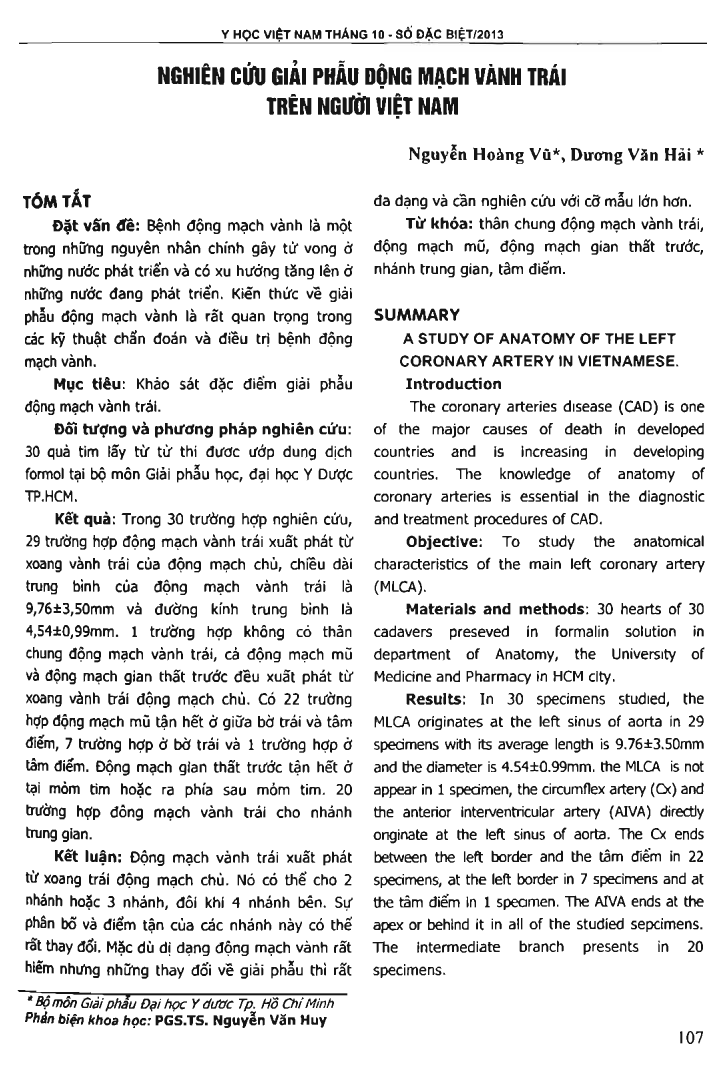
The coronary arteries disease (CAD) is one of the major causes of death in developed countries and is increasing in developing countries. The knowledge of anatomy of coronary arteries is essential in the diagnostic and treatment procedures of CAD. Objective: To study the anatomical characteristics of the main left coronary artery (MLCA). Materials and methods: 30 hearts of 30 cadavers preseved in formalin solution in department of Anatomy, the University of Medicine and Pharmacy in HCM city. Results: In 30 specimens studied, the MLCA originates at the left sinus of aorta in 29 specimens with its average length is 9.76 + or - 3.50mm and the diameter is 4.54 + or - 0.99mm. the MLCA is not appear in 1 specimen, the circumflex artery (0) and the anterior interventricular artery (AIVA) directly originate at the left sinus of aorta. The Cx ends between the left border and the tam diem in 22 specimens, at the left border in 7 specimens and at the tam diem in 1 specimen. The AlVA ends at the apex or behind it in all of the studied sepcimens. The intermediate branch presents in 20 specimens. Conclusion: The MLCA originates at the left sinus of aorta. It can divide into two branches, three branches and sometimes four branches. These branches may vary in distribution and terminal. Although the abnormality is very rare but the variation about anatomy of coronary artery is plentiful, it is need another research with more specimens.
- Đăng nhập để gửi ý kiến
